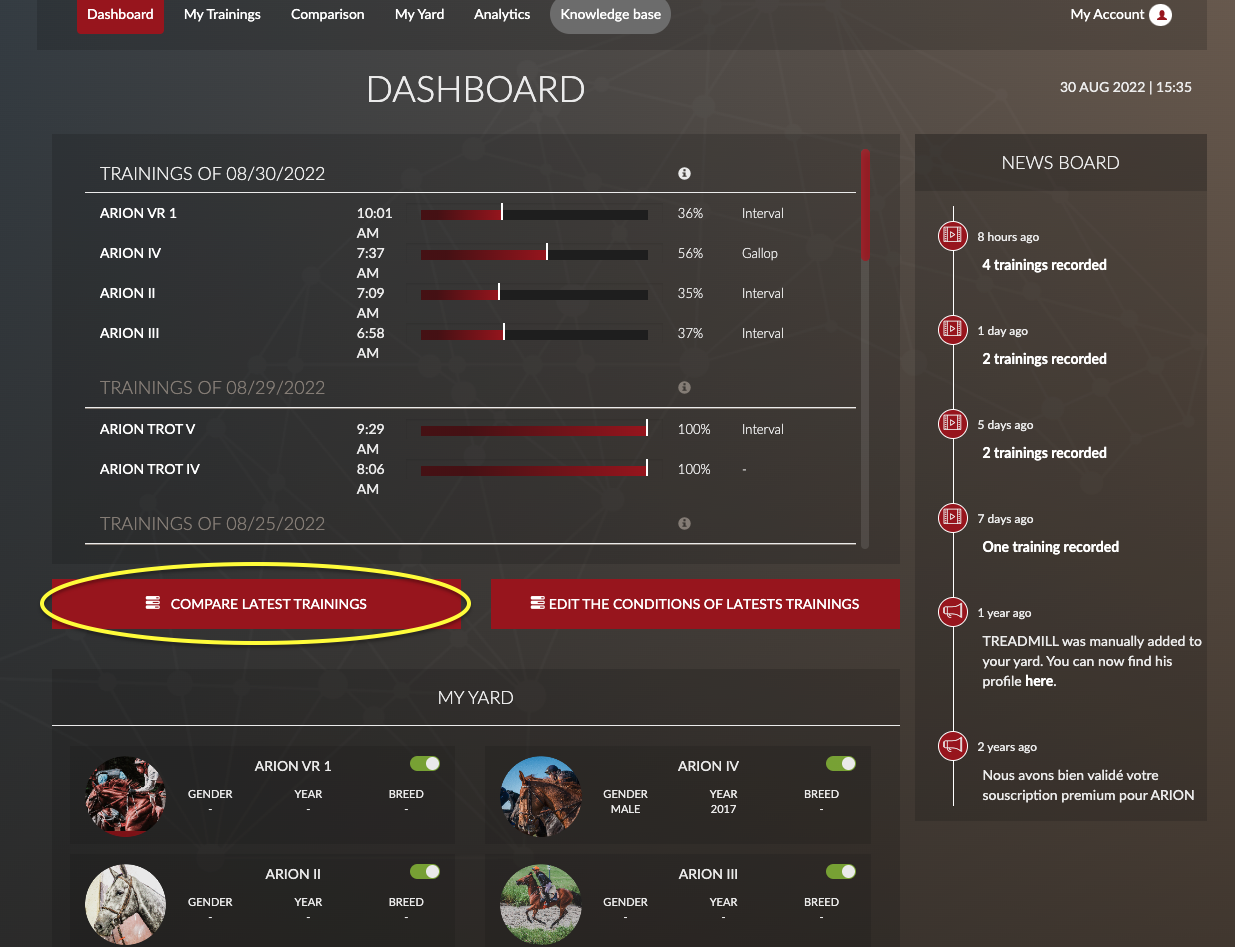You can easily compare the key parameters of several trainings with the comparison tool.
When you get to the Comparison tab, you can choose the different trainings to compare. For each training of each horse, you have the time, date, and the best time over 200m. You can then choose the trainings you are interested in.
Comparison between two horses
In order to compare the training of one horse in relation to another, you can use the comparison tool. To be relevant, the comparison must compare two comparable trainings (type of training, type of track, etc).
This type of comparison can be interesting for :
- The detection of future performers. Comparing a young horse with a classic horse that you know well will help you measure the work that remains to be done for the young horse. To do so, select 3 trainings, 1 for the young horse, 1 for the good horse at the same age, 1 for the good horse today.
- The evaluation of the differences in your two year-olds' development. If you have done similar trainings with each one, you can compare them and analyze the difference in recovery.
- The analysis of the locomotor profile to adapt the race distance. When you know the preferred distance of one of your horses, you can use his locomotor profile (Stride length and Stride frequency) as a reference to compare it with another horse (see the article on Locomotion).
How to use it in practice ? Listen to Elif, Data Success Manager at Arioneo :
Comparison of a horse with himself
The longitudinal analysis of a horse is a great benefit of Equimetre. It allows to detect abnormalities that can announce pathologies, to adapt the training load or even to support a feeling on the horse’s fitness to answer the question: is my horse really ready to race?
Select some training of the same horse to analyze his evolution :
- For example, returning to training after an injury is a difficult step that requires a gradual increase in workload. You can analyze the progress of recovery during training with the Comparison tool.
- When data from a training preceding a race where the horse did well is available, you can use it as a reference for the future and compare it with more recent training sessions. You will be able to determine where the horse stands in terms of fitness in relation to this reference training that has been successful in racing.
- Another example of the use of the comparison tool for the longitudinal analysis of a horse is the evolution of a two-year-old. You can get an objective idea of the evolution of his speed and his fitness by selecting all the latest trainings (comparable in terms of the type of track and type of training, if possible).
Comparison of the latest trainings
From the Dashboard or the Comparison tab, select «Compare latest trainings». All trainings of the latest day of use are automatically selected and compared by the Comparison tool.

Modify the comparison parameters
To modify the comparison parameters, you need to modify your key parameter. Go to this page to find out more : How to customize the key parameters ?
For more advanced comparison analysis you can access the Analytics tab. More info about how to use this advanced and complete comparison tool here!
